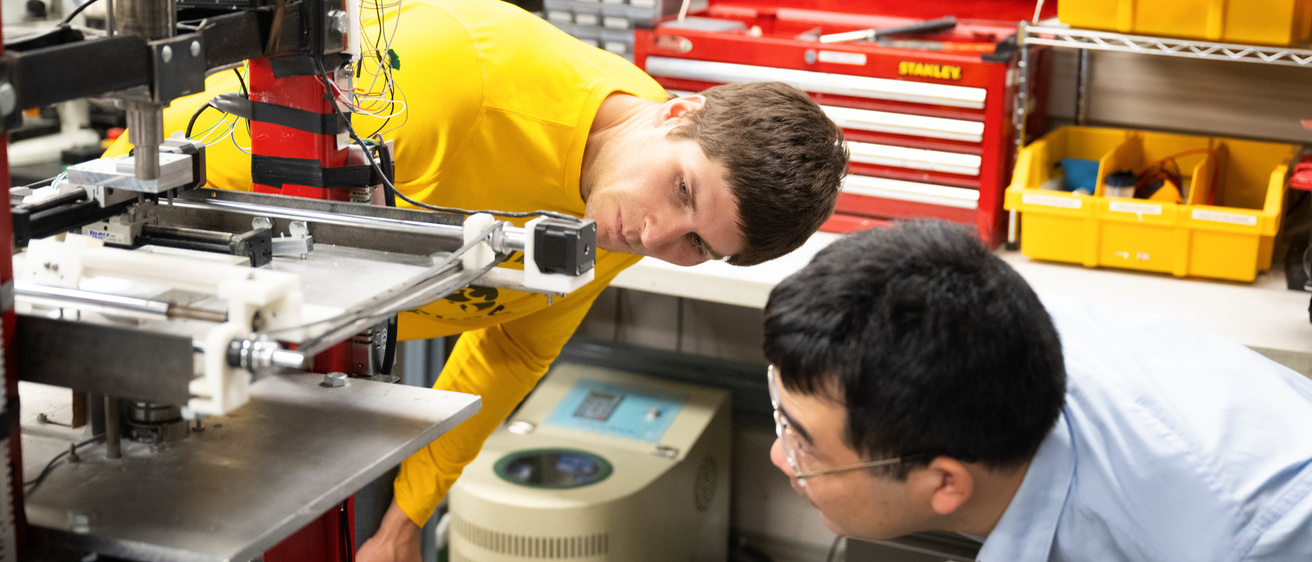About the Lab
Our research investigates how gentle and versatile material forming mechanisms found in nature can be leveraged to revitalize “age-old” manufacturing processes with enhanced sustainability and multi-scale tunability. Our current research interest focuses on ultra-low-temperature additive manufacturing (AM) of novel ceramics and composites, specifically for applications in high temperature (> 2000 °C) and high strain-rate (> 100 s-1) environments. Some unique manufacturing capabilities developed by our lab include:
- Sustainable AM of large-scale ceramics. Our hydrothermal-assisted jet fusion (HJF) process utilizes a selective cold sintering mechanism to fabricate complex ceramic structures and holds the potential to print ceramics under significantly reduced temperatures and on a larger scale.
- Versatile AM of dissimilar-phase composites. Our hydrothermal-assisted multi jet fusion (HMJF) process can seamlessly integrate dissimilar materials in a single volume, including ceramic-polymer, ceramic-metal, etc., enabling novel structural and functional properties.
- Versatile AM of energetic composites. Our pressure-assisted multi-jet fusion (P-MJF) process can locally tailor energetic crystals at the microscale, achieving energetic composites with highly tailorable compositions and microstructures.
Openings
Our lab always has openings for PhD students. We encourage interested individuals to contact Dr. Song with their CV. Applicants will be contacted for further discussion if there is a potential match.
News
April 2024: Bill received UI Outstanding Teaching Assistant award and COE Best Poster Award.
Dec 2023: Xuan received the AFOSR YIP award.
July 2023: Xuan has been appointed as the James A. Chisman Faculty Fellow.
April 2023: Xuan received the 2023 CoE Early Career Faculty Excellence Award.
Feb 2023: Xuan received the NSF CAREER award.
April 2022: Xuan received the 2022 SME Outstanding Young Manufacturing Engineer award.
April 2022: Bill and Prabhav won the 2022 Research Open House Best Poster Award.
Publications
Fei, F., Kirby, L., Gralczyk, A. and Song, X., 2023. Binder-free additive manufacturing of ceramics using hydrothermal-assisted jet fusion. Journal of the European Ceramic Society, 43(14), pp.6308-6320.
Kirby, L., Lawrence, A., Udaykumar, H.S., Sippel, T. and Song, X., 2023. Pressure-assisted binder jet additive manufacturing of solid propellants. Additive manufacturing, 77, p.103808.
